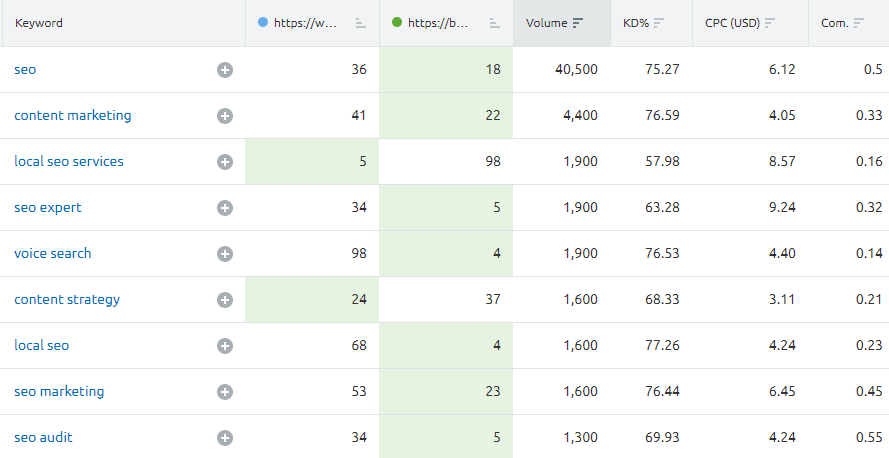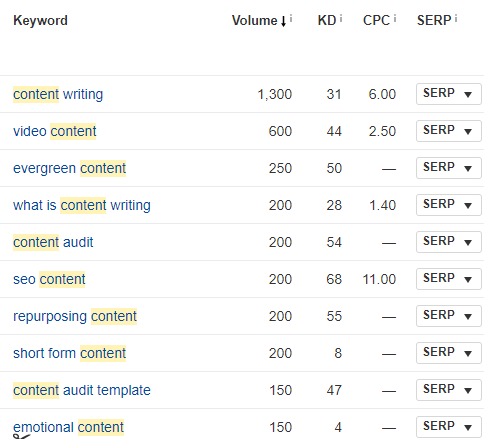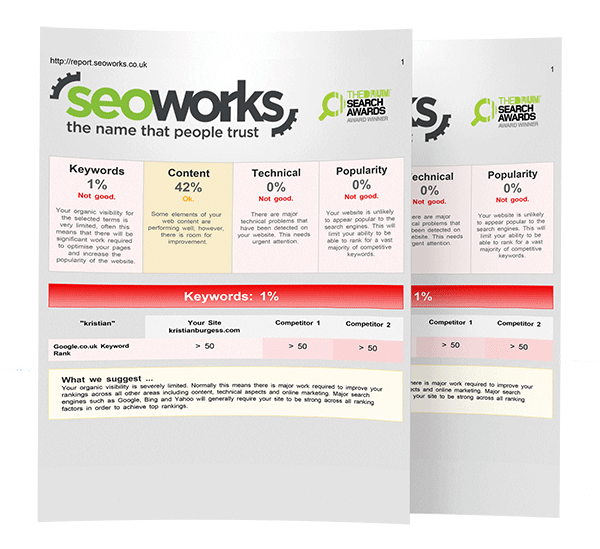Gap Analysis: Identifying Keyword and Content Gaps
The internet is full of holes. There will always be gaps in content based on questions and queries that can be exploited with some savvy planning to get your site ranking well, regardless of what you do.
Using both keyword and content gap analysis can create a roadmap of content that plugs these gaps, making the internet a better, more helpful place for your audience by providing answers to questions that may not have been answered elsewhere.
What is a keyword gap analysis?
Keyword gap analysis is the process of identifying keywords that a site’s competitors rank well for. This sounds obvious, but there are likely dozens of smaller, niche keywords for which competitors rank better. The cumulative traffic of all of these low-search-high-intent keywords could be the thing that gives the competition the edge.
Consider a site that sells trainers. There are obvious phrases like brands and models of shoe that all competitors will be targeting, but what about the niches? Extra-large shoe sizes for the podiatry well-endowed? Specific styles of shoe like athletic spike? Or golf/cricket cleat? These kinds of phrases may not even be on the radar as you target the biggest, baddest phrases to try and accumulate masses of traffic; but their very nature means they have high intent and are likely to convert; as well as being relatively low competition.
How to do a keyword gap analysis
There are many tools out there that will help you identify the keyword gap including, but not limited to, SEMrush. The tools on these platforms allow for a specific page on a competitor’s site to be analysed, identifying which keywords that page is ranking for.

This provides a list of potentially relevant keywords to target with similar products or services, which can then be used in the content gap analysis. Oftentimes the phrases may not be relevant, but choosing ones that are can help turn up the heat on the competition and focus a content strategy with laser-precision.
What is a content gap analysis?
The content gap analysis is used to identify areas of the site that don’t rank well or aren’t providing good user experience. This can be used both internally to analyse a site and figure out where improvements could be made, as well as externally on competition and ranking results pages to identify where gaps in information could exist which can be filled.
When looking internally, it’s important to identify any low-quality content – such as duplication, bad grammar, keyword stuffing or excessive linking – and fix it. This could be by consolidating several posts into one larger, more informative piece that covers more ground, or even by removing it altogether.
Conducting a competitor content gap analysis
Competitors will often be fighting for the same space in the market, the coveted front page of Google. Looking at the front page is a key factor in a content gap analysis as it is an opportunity to not only see what other sites do well but crucially to see what they don’t.
Identifying gaps in information or knowledge (which can also be done using tools like ahrefs and linkio) is an opportunity to provide that information, which can mean you jump ahead of them in the search results pages by providing a more detailed, informative answer to the customer query.

It’s not all about blogs
Blogs, while important elements in providing information to the audience, are not the be-all and end-all of closing a content gap. It’s also essential that category and product pages are reviewed to make sure they are providing the best answers to the questions audiences are asking – especially when it comes to product specifications or applications.
Depending on how a user enters the funnel, they may be looking for generic information about a product or service (category pages), or they may be wanting to find specific products with an intent to buy after they’ve completed all their research and comparison (product pages). There is also the middle ground, the research phase where customers will look at reviews, FAQs and try to learn more about a product or service before converting.
Both keyword gap analysis and content gap analysis can help reduce the number of holes on the internet, while at the same time positioning the site well in search – everybody wins.

Adam has a background in journalism and almost a decade of experience in SEO. He’s passionate about data, content and cricket – although not necessarily in that order.

